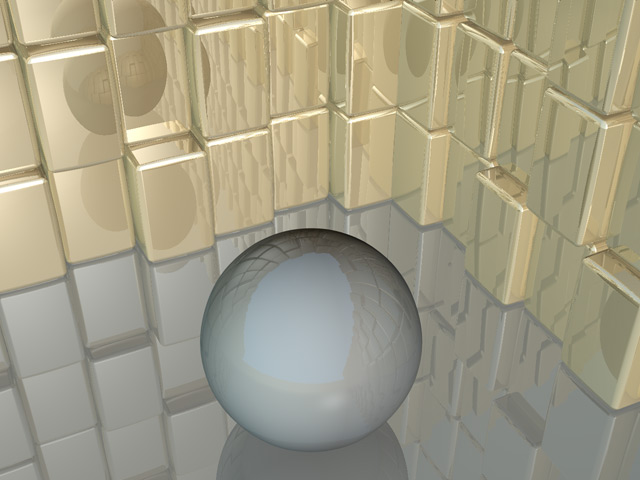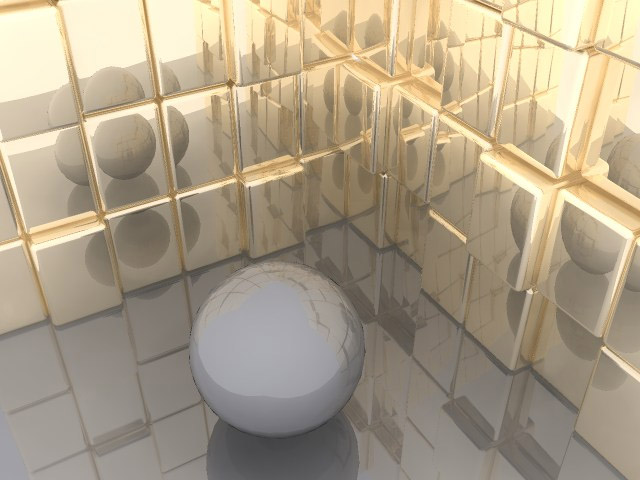

Let me preface this by admitting to being pretty ignorant about the joys, trials and tribulations of ray trace engines. I know enough math to know they're complicated and hard to do very well. I'm also very aware of the tradeoffs between time to render and quality. Having said that, I have a couple images to look at:
 |
 |
| Example 1 | Example 2 |
One of the images was rendered by a raytrace engine that was being talked about on-list last week. It apparently offers GI (Global Illumination) and probably scads of other cool things I'm unclear on. The other was rendered directly out of A:M with a simple three-light setup at 1280x960 in 11m, resized to 640x480.
I compressed my image to a similar size JPG as the original in Photoshop. I didn't do anything to the original so if compression artifacts crept in I'd expect them to be more or less consistent for the compressed size, but I could certainly be wrong.
Here's my question: Which is which and how can you tell?
I'm not looking to bash renderers either for or against A:M. Personally I'm very happy with the results I get for the money I spent. The question is intended to help teach me what it is I don't know. Why is the other one so much better?
To keep things simple, the one on the left is A:M, the other is the other renderer. I suppose I could have tried a skylight rig to see what that did, but I was pretty happy with the results I got and I don't know enough to know why I shouldn't be.
So, if you're interested in educating an ignorant person, please let me know. I'd like to learn more. Thanks,
You can email me here to let me know what I'm missinghere
Credit for the original image goes to TheGazz and the link for the image is here.
|
This document maintained by
webmaster@mossor.org. |